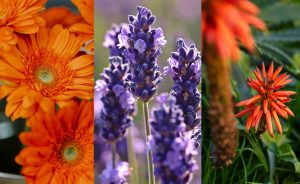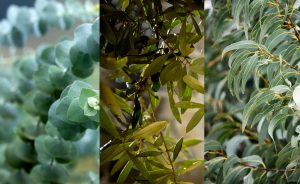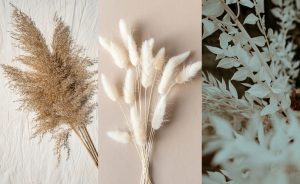South African summers (December–March) are notorious for intense sun and coastal winds, with daytime temperatures often hitting 30–40 °C. Without thoughtful planning, fresh wedding blooms like roses, peonies or tulips wilt, sometimes within just 30 minutes under direct sun.
That’s why 2025 bridal couples (and their florists!) are shifting to heat-tolerant, indigenous blooms, which stay vibrant even through al fresco ceremonies and midday receptions.
Step 1: Why Choose Indigenous Flowers?
-
Drought-savvy & durable: Indigenous florals like proteas, brunia, and ericas evolved in South Africa’s fynbos and savannah–perfect for dry summer days.

-
Beautifully local: Rich texture & fragrant foliage tie in your wedding with Cape Town’s natural heritage, no imported blooms needed.

-
Year-round availability: Many species bloom in late winter through early summer (June–Dec), ideal for planning December-January weddings.
“Our protea flower arrangements are designed to honour the natural beauty and cultural heritage of South Africa… We source only the finest blooms directly from local farms in Cape Town.”
—Fabulous Flowers & Gifts, Cape Town Fabulous Flowers and Gifts
Step 2: Proteas – The Hero of Heat‑Resistant Wedding Florals
What makes proteas perfect for summer weddings:
-
Incredibly hardy – king protea and pincushion types tolerate strong coastal winds and resist wilting in heat.
-
Long vase life – with proper conditioning, proteas can last 14–16 days, often outlasting the weekend festivities (Ode à la Rose).
-
A sculptural statement – choice of blazing fuchsia, creamy pinks, and deep burgundy, adding instant drama to bouquets or aisle markers.
“I love the contrast of the indigenous, soft‑stemmed flowers and the South African protea, with their hard, woody stems which protect them in high heat.”
—Stems Of Windsor, florist based in Cape Town (Instagram July 2025)
Quick Protea planning chart
| Protea Type | Recommended Use | Design Tip |
|---|---|---|
| King Protea | Bridal bouquet focal point | One stem + eucalyptus + a “halo” of ruscus |
| Pincushion Protea | Bridesmaids’ bouquets, boutonnières | Clustered with waxflower or brunia |
| Sugarbush Protea | Ceremony backdrop, statement centerpieces | Mix with fynbos stems and dried grasses |
Eligible heat-resilient extras:
-
Succulents (e.g. aloe blooms) and senecio, plus lavender, gerbera daisies, and bougainvillea, which hold water long under sun (Black Tulip Flowers Oman).

-
Hard foliage like eucalyptus, olive, or gum leaves, perfect for filler or structural support.

-
Dried accents, pampas grass, bleached ruscus, or bunny-tail grasses, to boost volume and extend on-day endurance.

Florist best practices:
-
Keep arrangements in shaded or temperature-controlled areas ahead of time.
-
Use water tubes for all hand-held blooms and floral sealant on large blooms.
-
Chill (not freeze!) bouquets before ceremony, avoids condensation on petals.
-
Update water in centerpieces right before guest arrival.
Real-Wedding Mini Inspiration: Two South African Gems in 2025
Venues where indigenous blooms shine:
-
Fynbos Estate, Swartland (≈ 1 hour from Cape Town): Set amid vineyards & natural fynbos gardens, this venue hosts exclusively one wedding a weekend. Ideal for florals that echo the landscape, from protea bridal bouquets to sage-scented ceremony arches under olive trees (ynbosestate.co.za).
-
Simbavati Fynbos on Sea, Overberg Coast: A destination venue framed by indigenous coastal fynbos. Ideal for intimate sunset ceremonies styled with drifting pampas grass, king protea altar designs, and native succulents in driftwood containers (simbavati.com).
Couple – Johan & Mareli (Cape Winelands, Jan 2025): “We knew we wanted proteas after scouting Fynbos Estate, we tied pincushion proteas into our bouquets and centerpieces, paired with olive and succulents. The blooms didn’t fade even under the 32 °C afternoon sun!”
Easy‐to‐Follow Eco + Budget Tips
-
Book local growers instead of imported floral services (usually 40% cheaper).
-
Repurpose ceremony décor at reception, altar arches make unique photo backdrops and escort table floral holders.
-
Potted proteas as live centerpieces allow guests to take home a plant (or you can donate extras to community gardens post‑event).
Why This Trend Isn’t Going Anywhere in 2025
-
Climate resilience – heat‑resistant indigenous florals reduce spoilage and avoid hot-day panic (like wilted roses).
-
Sustainability – no plastic packaging, fewer water miles, and support for Cape flora biodiversity.
-
Timelessness – proteas age well, sometimes drying into lasting keepsakes long after petals fade.
Tips for Planning Your Florals in 2025
-
Book florists early (3–6 months): Summer months sell out quickly.
-
Share your venue name early, many florists coordinate with site crews (arch erectors, décor teams) for power, vases, and shade.
-
Ask for a formal sample arrangement, most studios like Alison’s Flowers or Fabulous Flowers offer tabletop mock-ups to show bloom placement and water-supply setup (alisonsflowers.co.za),(Fabulous Flowers and Gifts).
-
Request a post-wedding care guide (lucky brides get tips on preserving Proteas, repotting potted centrepieces).
In South Africa’s summer heat of 2025, flowers don’t have to wilt. By choosing heat‑tough, indigenous blooms led by proteas and designing with clever hydration practices, your wedding can bloom all day. Whether you’re in the Winelands’ fynbos or coastal dunes, your florals can reflect the season, support local ecosystems, and stay fresh enough to flourish late into the evening.
Featured Image: Canva

